Since Pixel is the first true "phone by Google," many consumers are hoping for the kind of unified software and hardware presentation that can be missing from Android environments, but has long been an Apple mainstay. But what about specs? Here's a nuts-and-bolts comparison of the Pixel and iPhone 7.
Size
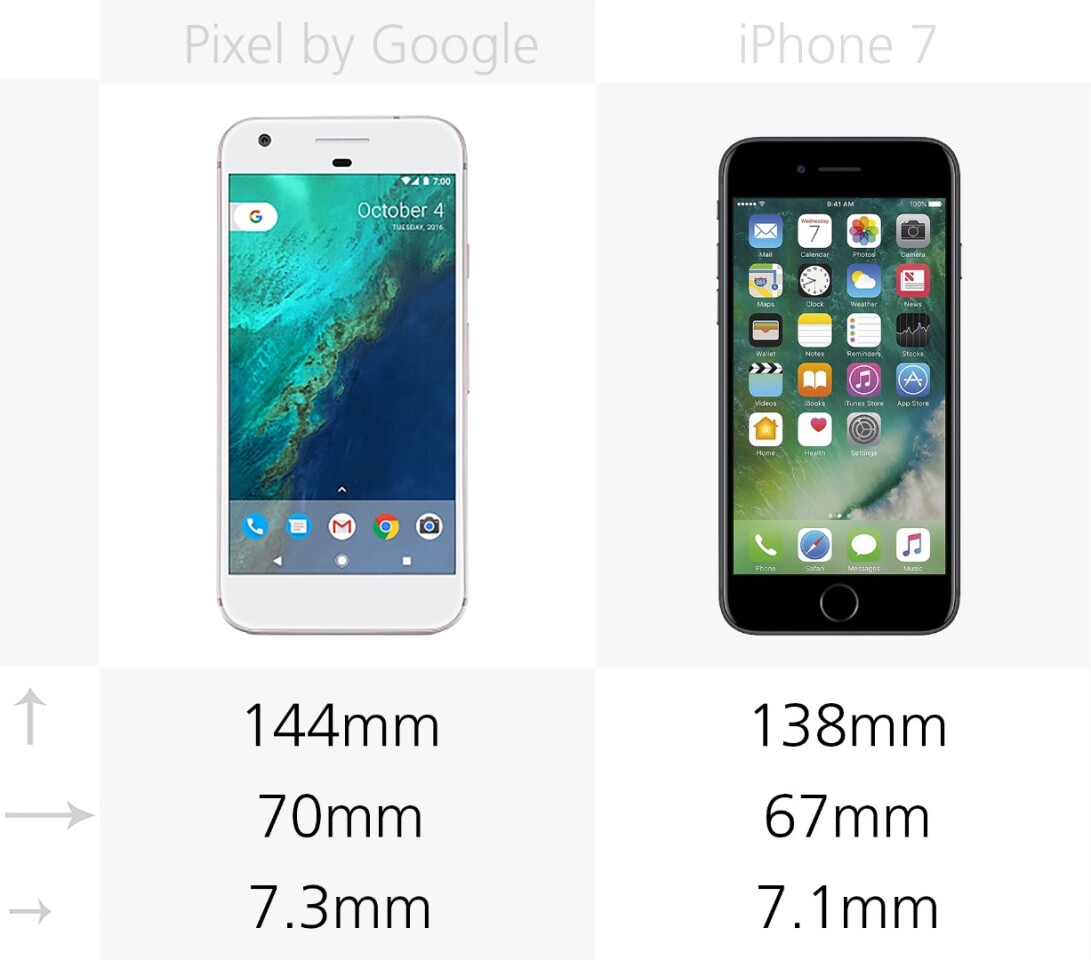
Many Android manufacturers make their phones a little larger and flatter than iPhones, and Google is no exception. The Pixel is about 4-percent taller and wider than the iPhone 7, but only 0.2-millimeter thicker.
Keep in mind that each phone is the "little brother" within its lineup. The Pixel XL and the iPhone 7 Plus are both bigger phones, and we'll take a side-by-side look at those separately.
Weight

The bigger Pixel is proportionately heavier. It weighs 3.5-percent (about the weight of a nickel) more than the iPhone.
Build

In terms of construction, both phones play it safe with a glass front and aluminum unibody.
Colors
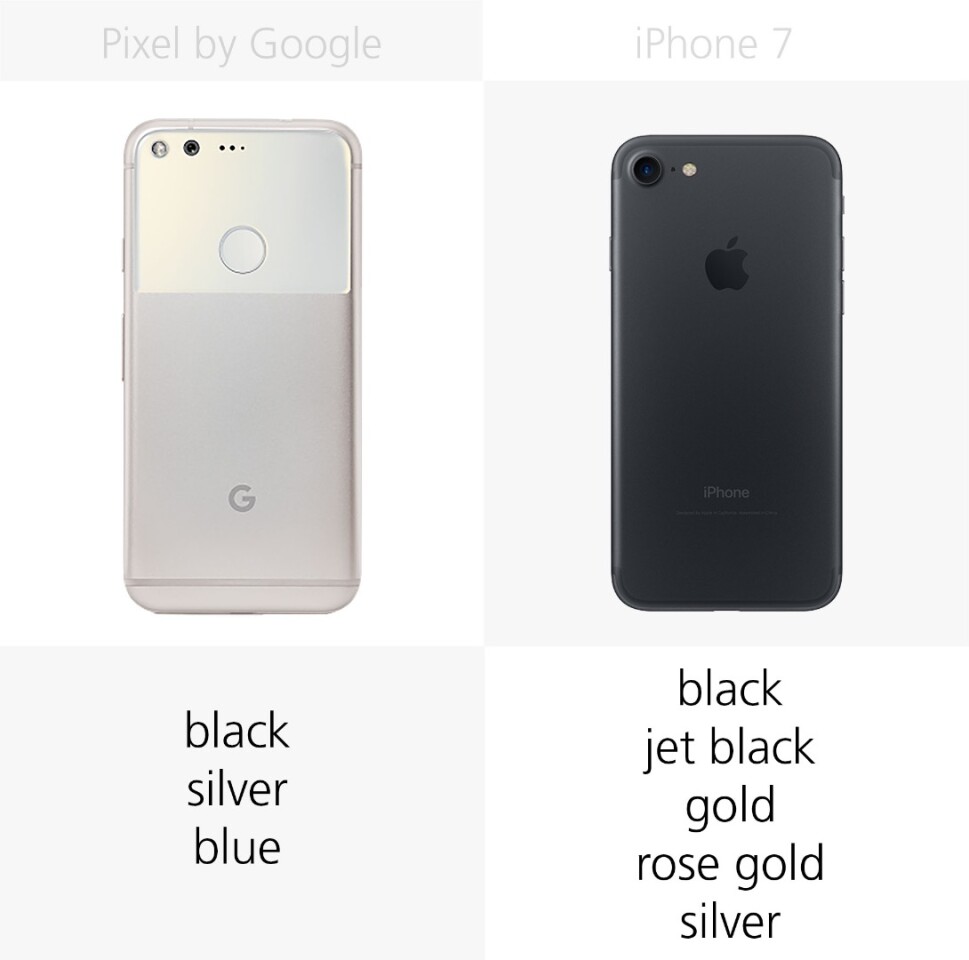
The iPhone has more color options, with matte black, glossy black and three metallic tones. Pixel keeps it simple with black, blue and silver. Let's be honest though – those colors are probably going under a phone case, anyway.
Water resistance

This year, we saw improved water resistance in mobile technology across the board. Even though this is the first year iPhones have had a water resistance rating (they can withstand accidental immersion in water up to one meter deep, for up to half an hour), a lack of water resistance in the Pixel seems like a misstep.
Display size

It's no surprise that the bigger Pixel has a larger display. Neither phone optimizes its screen-to-size ratio particularly well, though. They both have significant blank space on their "chins" and "foreheads".
Display resolution

Pixel lives up to its name and wins the pixel density war handily (which is important for using the phone as a VR device – see below). Still, resolution isn't the only indicator of a quality display. The iPhone gets kudos for its color accuracy and contrast. We'll have to take a closer look at the Pixel in our forthcoming full-length review.
Display type

Apple is one of the few manufacturers still clinging to IPS display technology; Google uses AMOLED in the Pixel. We're still not sure if this means the Pixel will have an "always-on" display mode like many other AMOLED-sporting flagships do, though it does not appear to.
Pressure-sensitive display
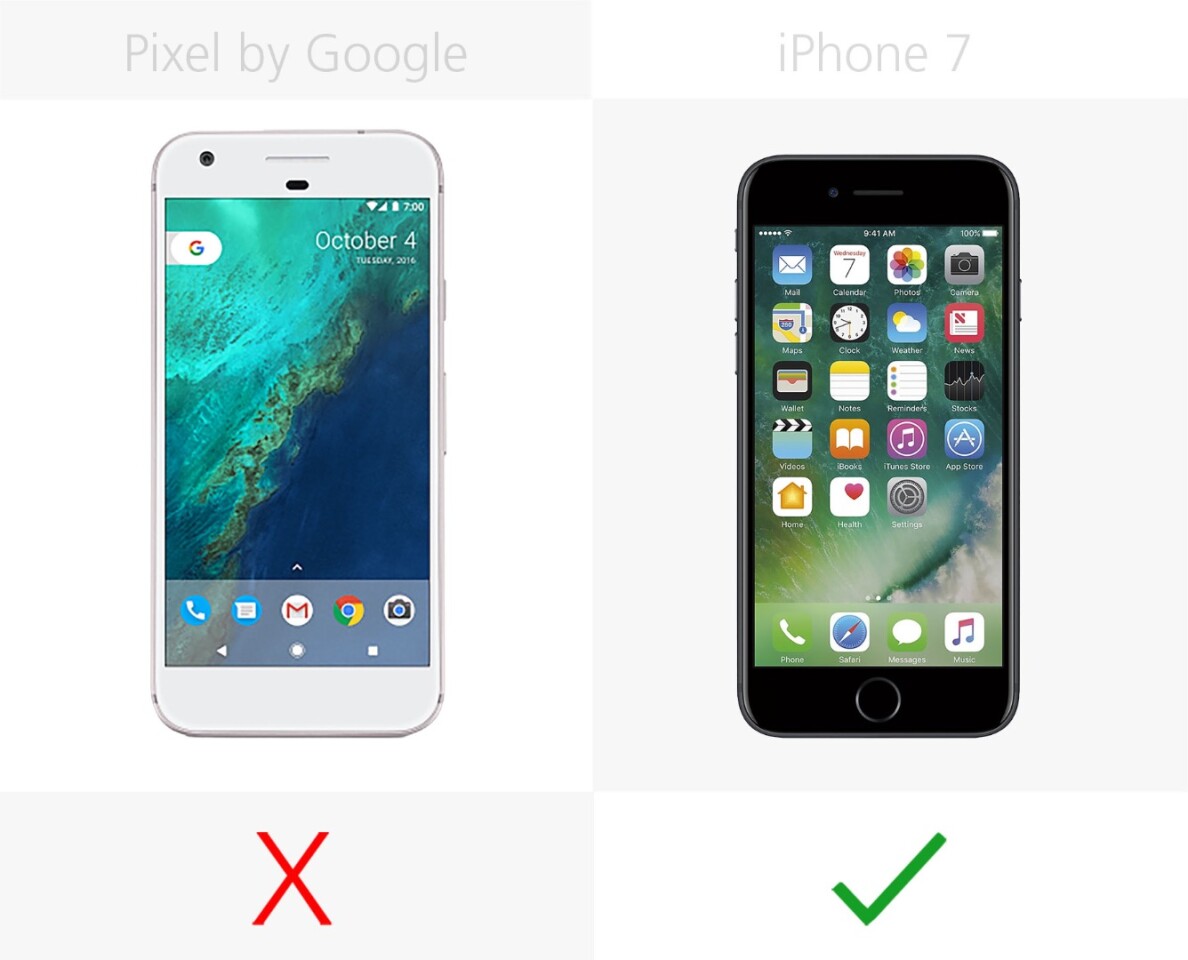
This feature can be difficult to describe to folks that haven't picked up an iPhone in a while. Current iPhones (with the exception of the dainty SE) come equipped with a pressure-sensitive display, which provides navigational shortcuts based on how long and hard you press the screen. Apple calls this bit of technology "3D Touch." To us, 3D Touch has potential, but it hasn't been realized yet.
Camera megapixels

Pixel sneaks past the iPhone with one more megapixel in the selfie camera, where it counts the most.
Camera aperture (rear)

iPhone bests the Pixel in terms of camera aperture. The smaller the f-stop, the larger the aperture, which is generally a good thing. It means more light can access the imaging sensor, for better photos in low-light conditions.
Optical image stabilization

Optical image stabilization staves off unwanted photo blur that arises from hand shake and long exposure times. iPhone has it, Pixel doesn't.
Dual rear camera
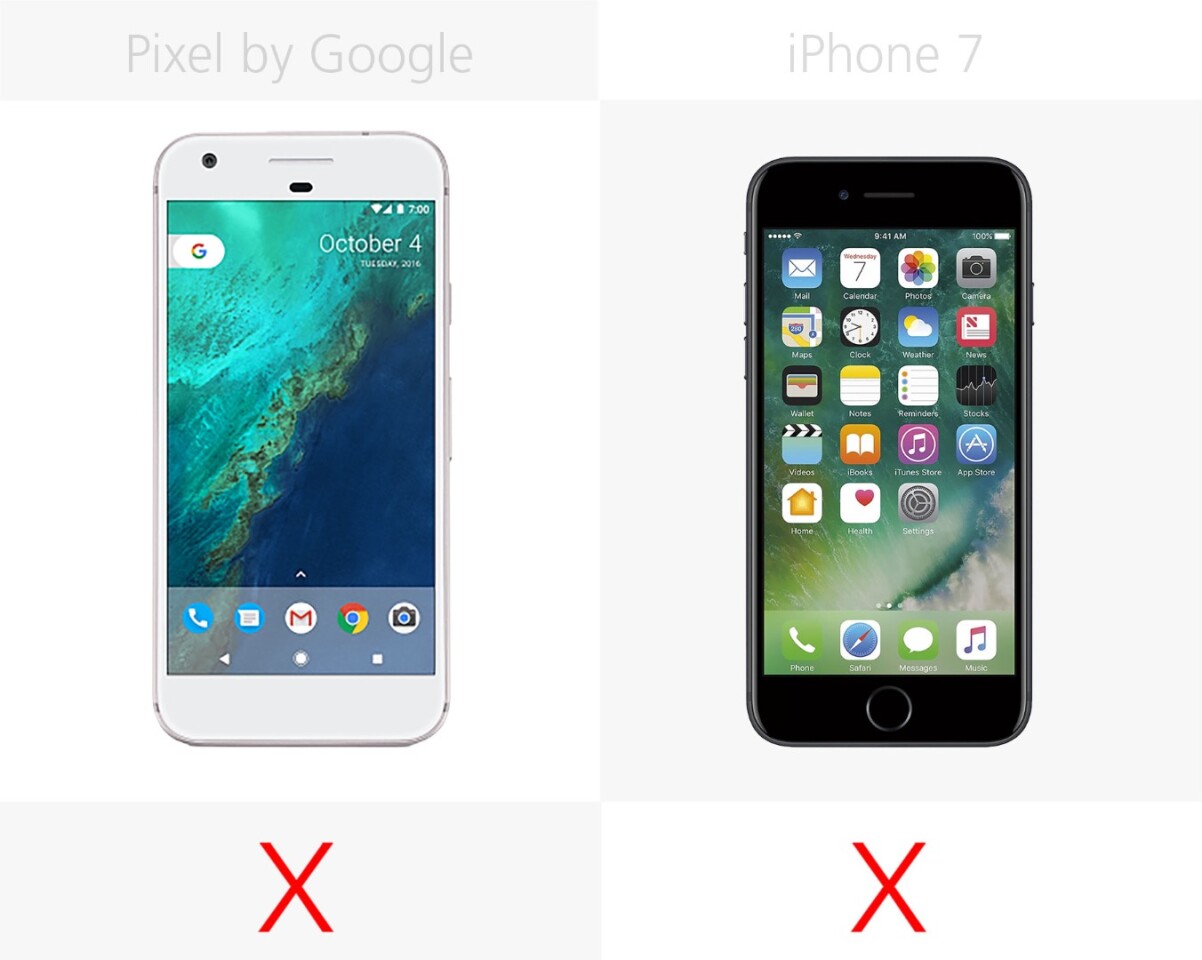
Just to be clear, it's the iPhone 7 Plus that comes equipped with an optical zoom-enabling dual lens rear camera. Both of these phones have a single lens.
Battery

The Pixel has a considerably bigger battery than the iPhone 7. Google estimates that a full charge will get you up to 26 hours of talk time or up to 13 hours of internet use or video playback. On the iPhone 7, Apple says you'll get up to 14 hours of talk time, 12 hours of internet use, or up to 13 hours of video playback.
Fast charging
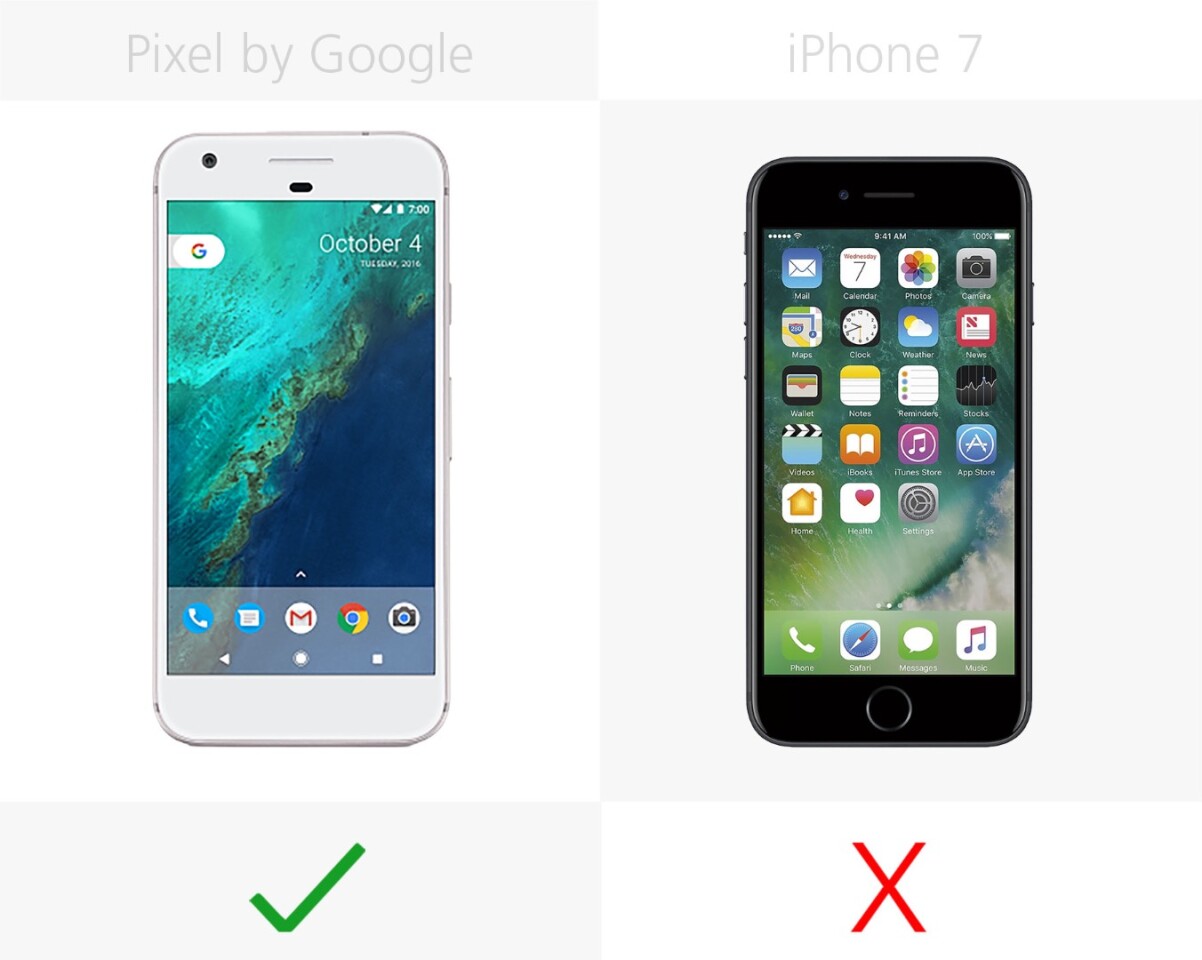
According to Google, the Pixel can get up to 7 hours of use from only 15 minutes of charging. iPhone users are still waiting for similar convenience.
Wireless charging

Neither phone can be charged wirelessly.
Processor

We'll perform a benchmark test on the Pixel soon, but it seems like Apple's A10 fusion chip is a touch faster than the duly capable Snapdragon 821 in the Pixel.
RAM
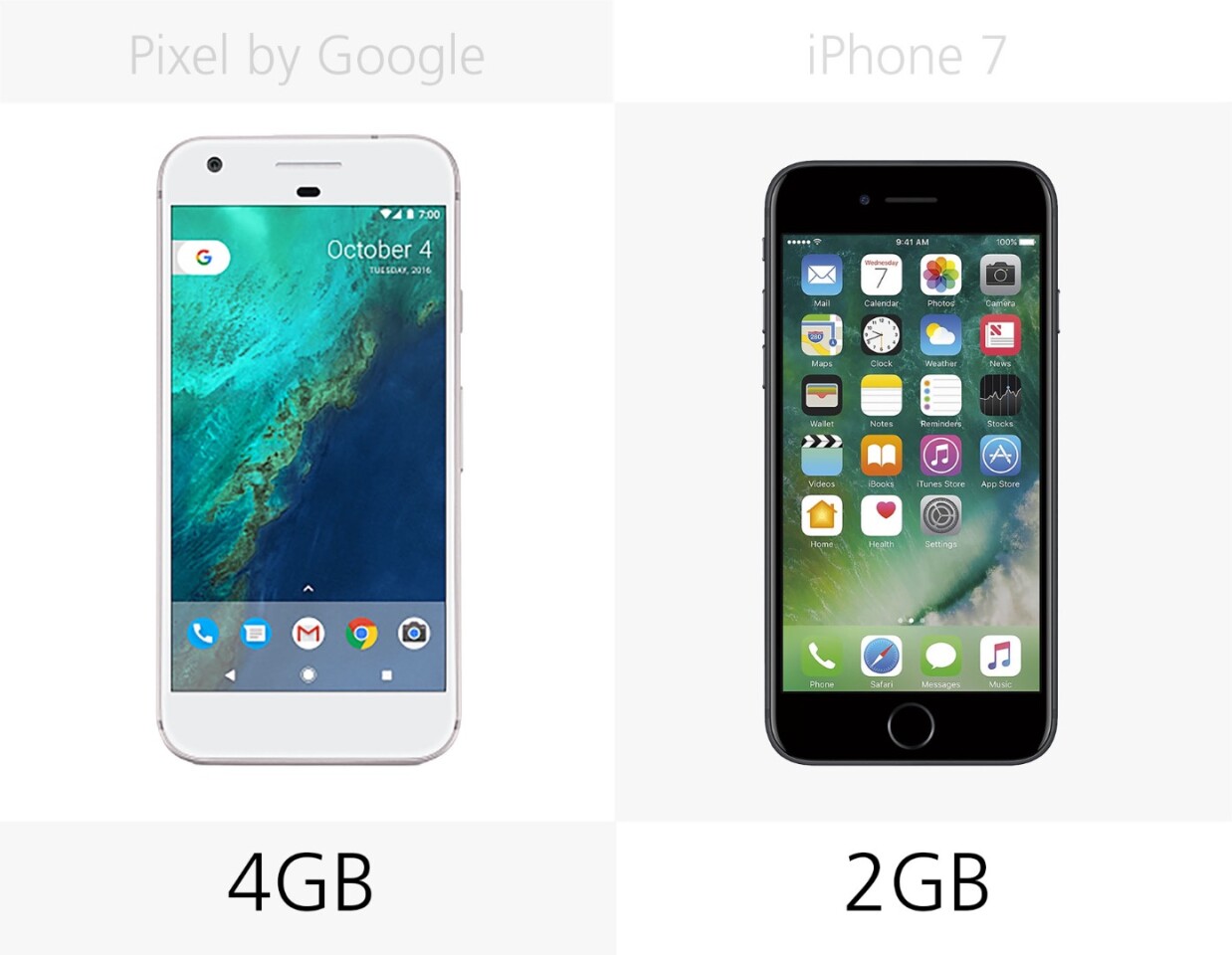
Pixel has twice the RAM of the iPhone 7, so it should be well equipped for any software application. Still, it is worth mentioning that iPhones have always performed efficiently with relatively low amounts of RAM.
Storage
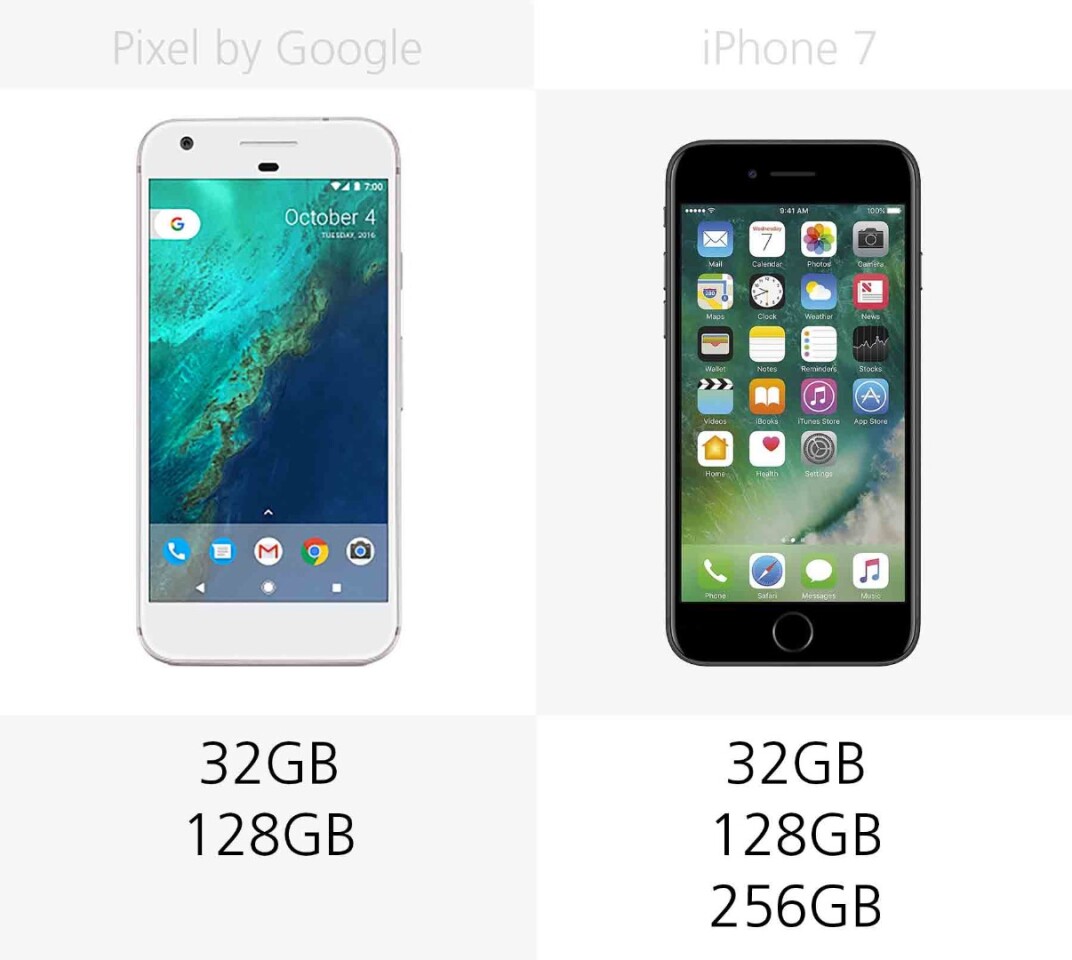
Both phones are available in 32 or 128-gigabyte capacities. In addition, iPhone 7 has an extremely capacious 256-gigabyte option. If you want the new glossy black iPhone, you'll have to spring for one of the two larger sizes, as the 32 GB size is not available in jet black.
microSD
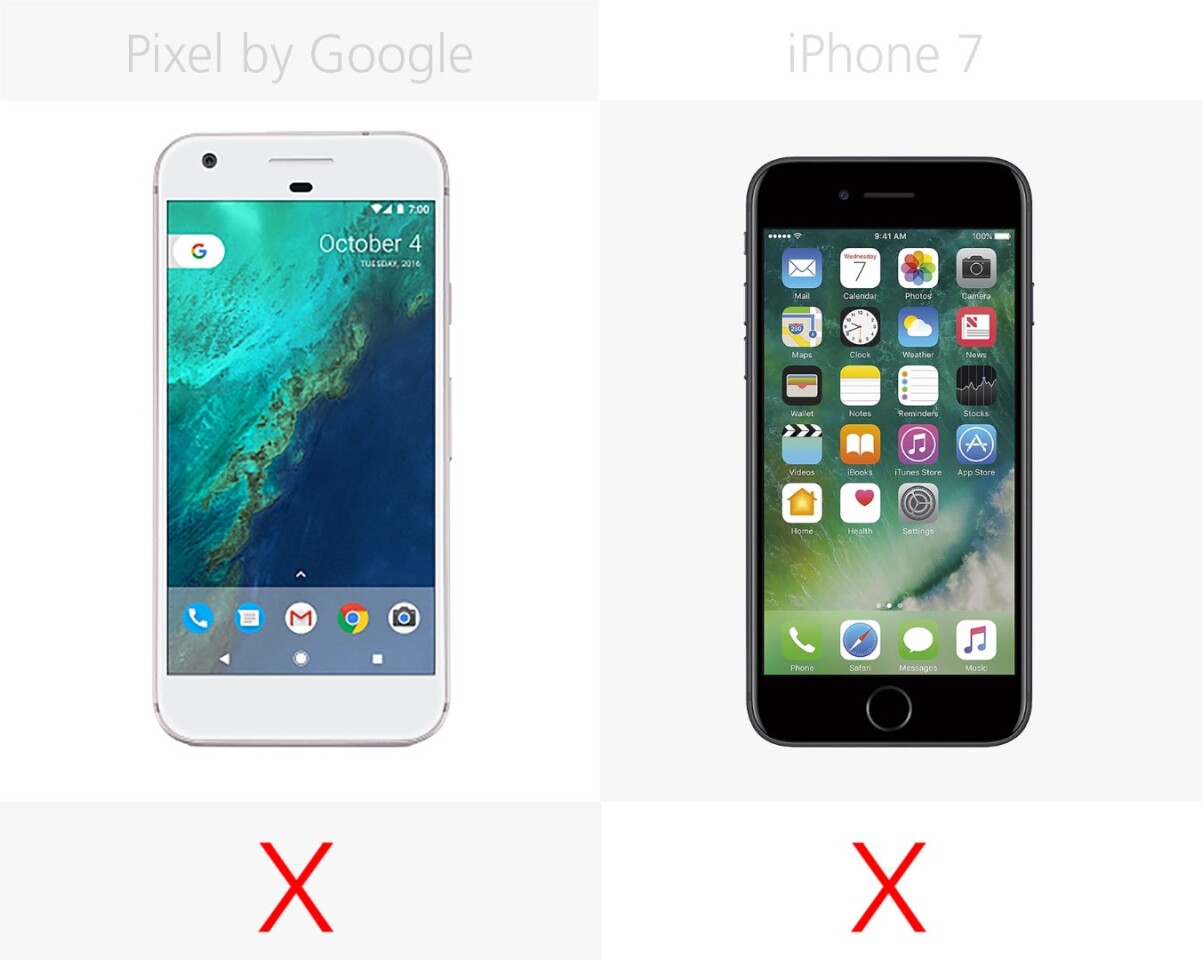
External storage has never been an iPhone option, but many Android adherents may be frustrated about microSD missing from the Pixel, a Nexus/Pixel tradition.
VR compatible

Pixel is compatible with the new Google Daydream View virtual reality (VR) headset. In fact, it's even shipping with Daydream for free in the U.S. as part of a temporary pre-order promotion.
Once Daydream View ships in November, we'll be able to weigh it up against the current leading mobile VR headset, Gear VR. We are excited to check out Daydream's microfiber construction and test its accompanying controller. Considering that consumer VR hit the market this year in a big way, we're wondering if and when Apple will follow suit.
Headphone jack

Apple's never been shy about axing hardware; the headphone jack on the iPhone hit the chopping block this year. iPhone 7 does ship with a headphone-to-Lightning adapter as well as Lightning port earbuds, but if you want to use your current headphones without any extra cordage, opt for a Pixel.
Fingerprint sensor
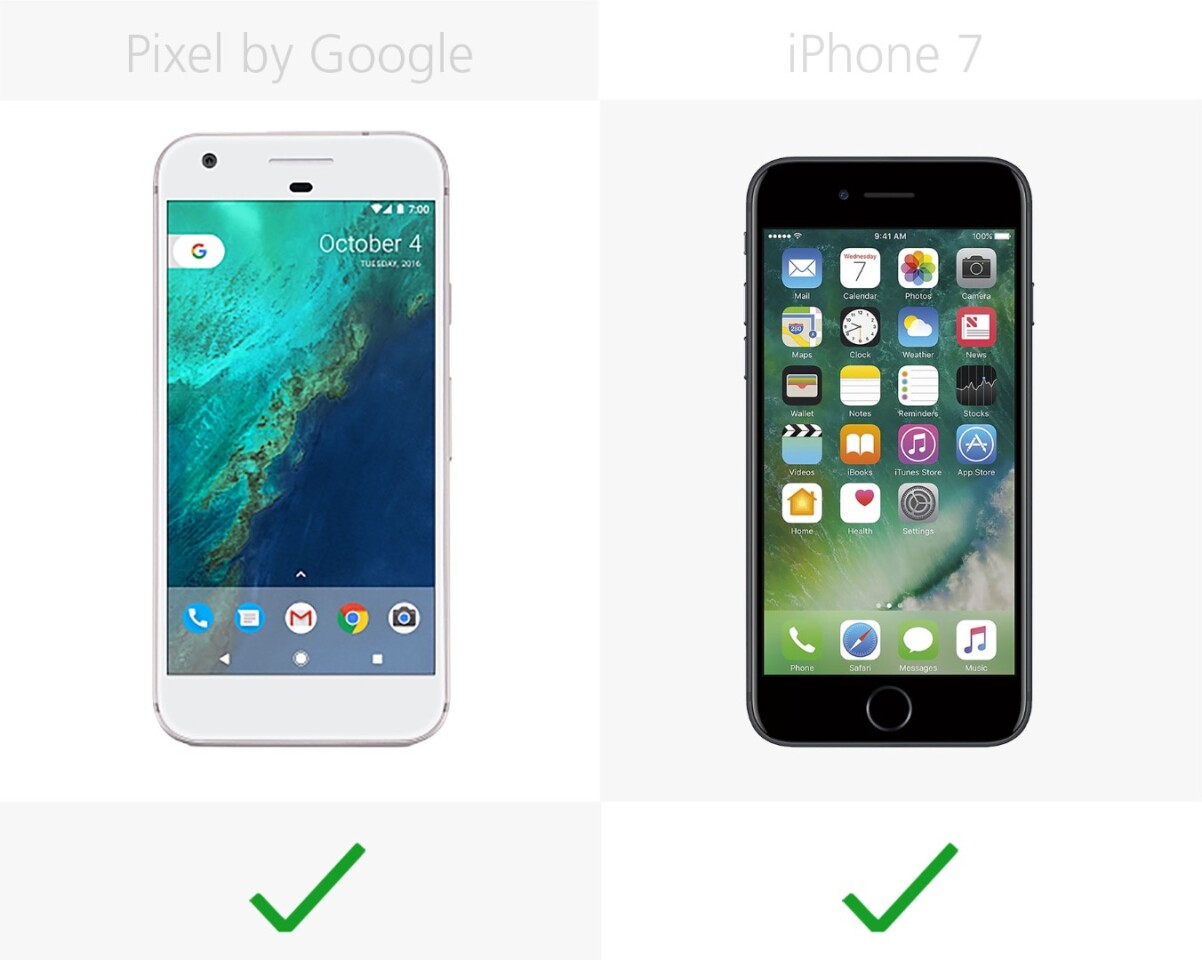
Both phones have fingerprint sensors, and both manufacturers bestow upon them a glib proprietary moniker: Google's is "Pixel Imprint" and Apple's is "Touch ID". The Pixel's scanner is on the back of the phone. On the iPhone, the fingerprint scanner is built into the home button.
Home button
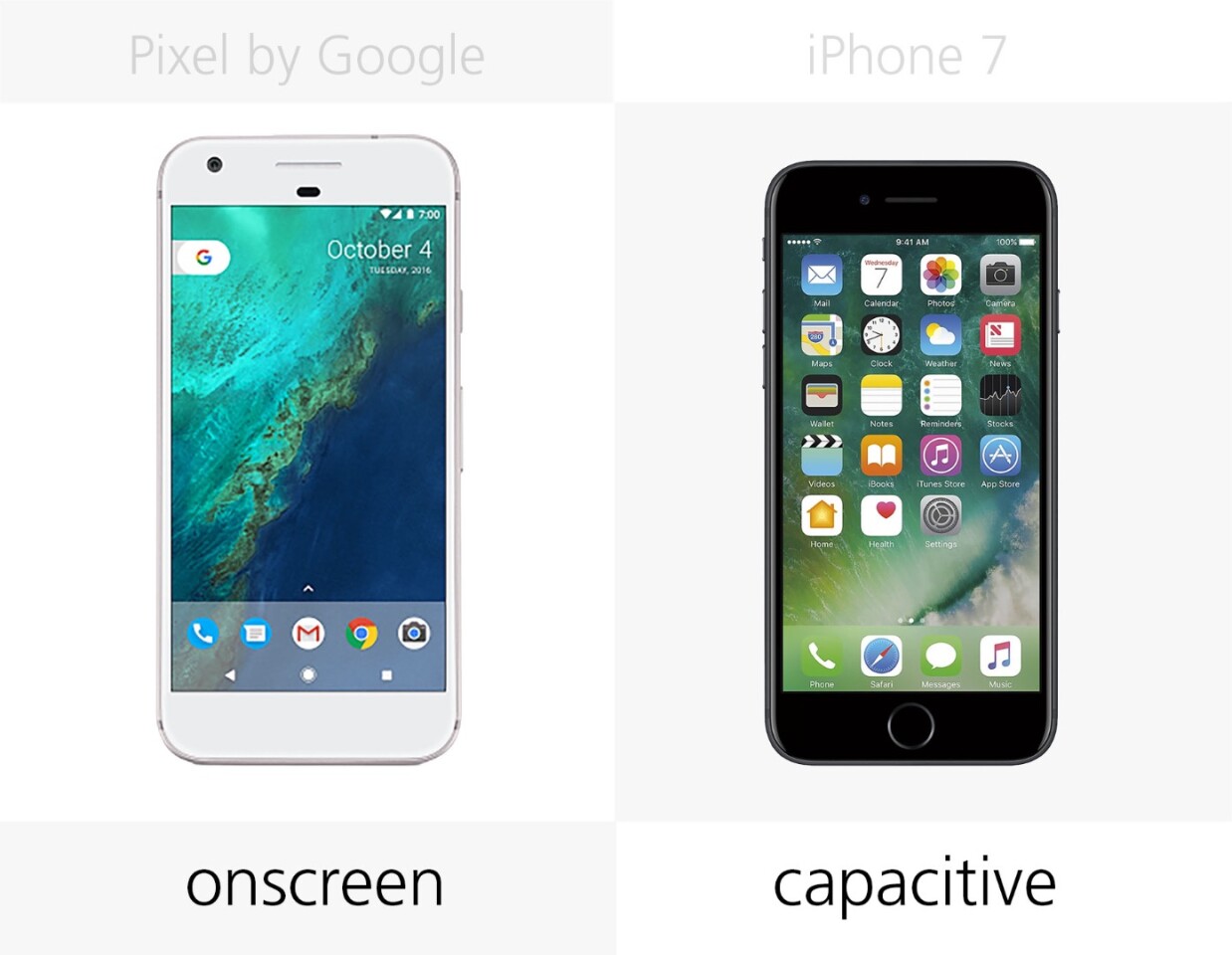
Since smartphone hardware is so similar, the home button experience can be a relatively transformative one.
Like many Androids, Pixel has an onscreen home button flanked with back and recent app buttons. The iPhone has the most uniquely capacitive home button around: A solid-state button below the display with an integrated fingerprint sensor, varying levels of pressure sensitivity, and haptic feedback for a real-click feel.
Mobile payments
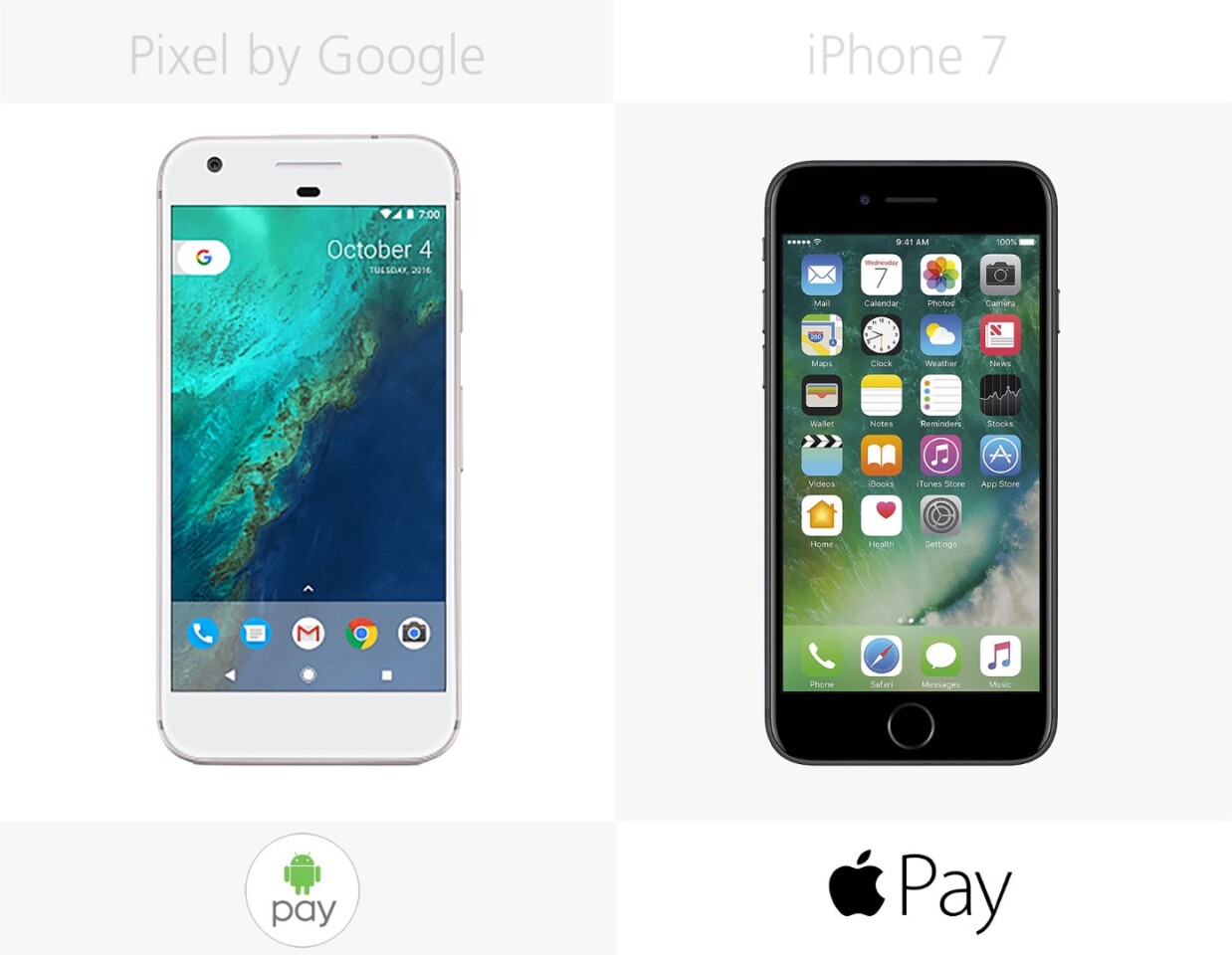
Both phones are NFC-equipped, so they can be outfitted with their respective software's mobile payment option.
Virtual assistant

In addition to being the first Google-branded phone, Pixel is the first to have Google Assistant built-in. Assistant is an improved descendent of Google Now, and it seems to have a few advantages over Siri. For example, Assistant can better handle contextual queries and has useful additions like sending automatic responses and asking follow-up questions.
Operating system
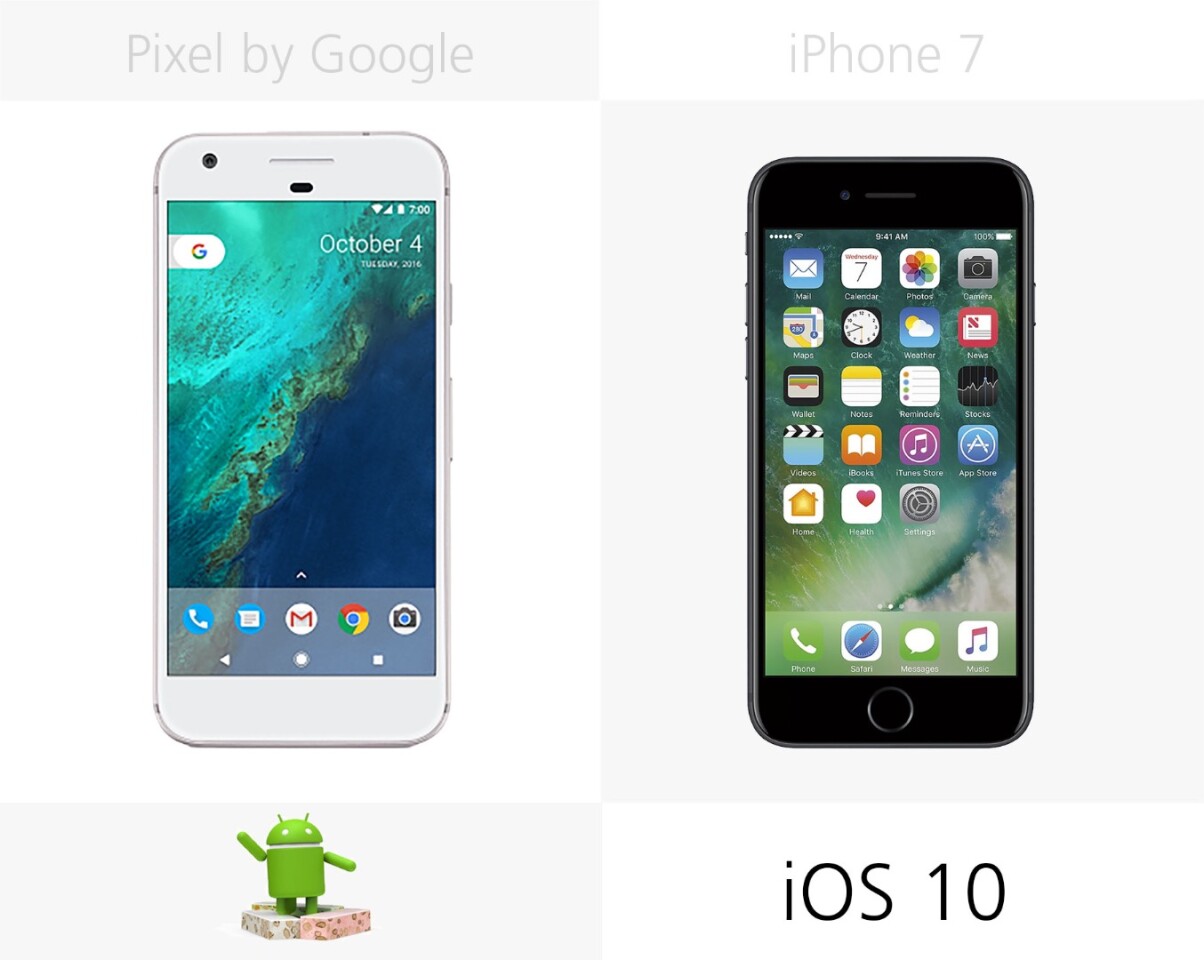
While Apple pushes the latest software update onto all iPhones (and bricks a few in the process), not all Android phones receive software updates. No need to worry about that with the Pixel, though. As the first Google-branded phone on the market, it's going to showcase the latest and greatest Android software. Pixel launches with a brand-new 7.1 version of Android Nougat, and Google promises two years of OS upgrades and three years of security updates from launch.
Release

Google announced the Pixel and Pixel XL just a few weeks after Apple released the iPhone 7 and iPhone 7 Plus.
Starting price (full retail)
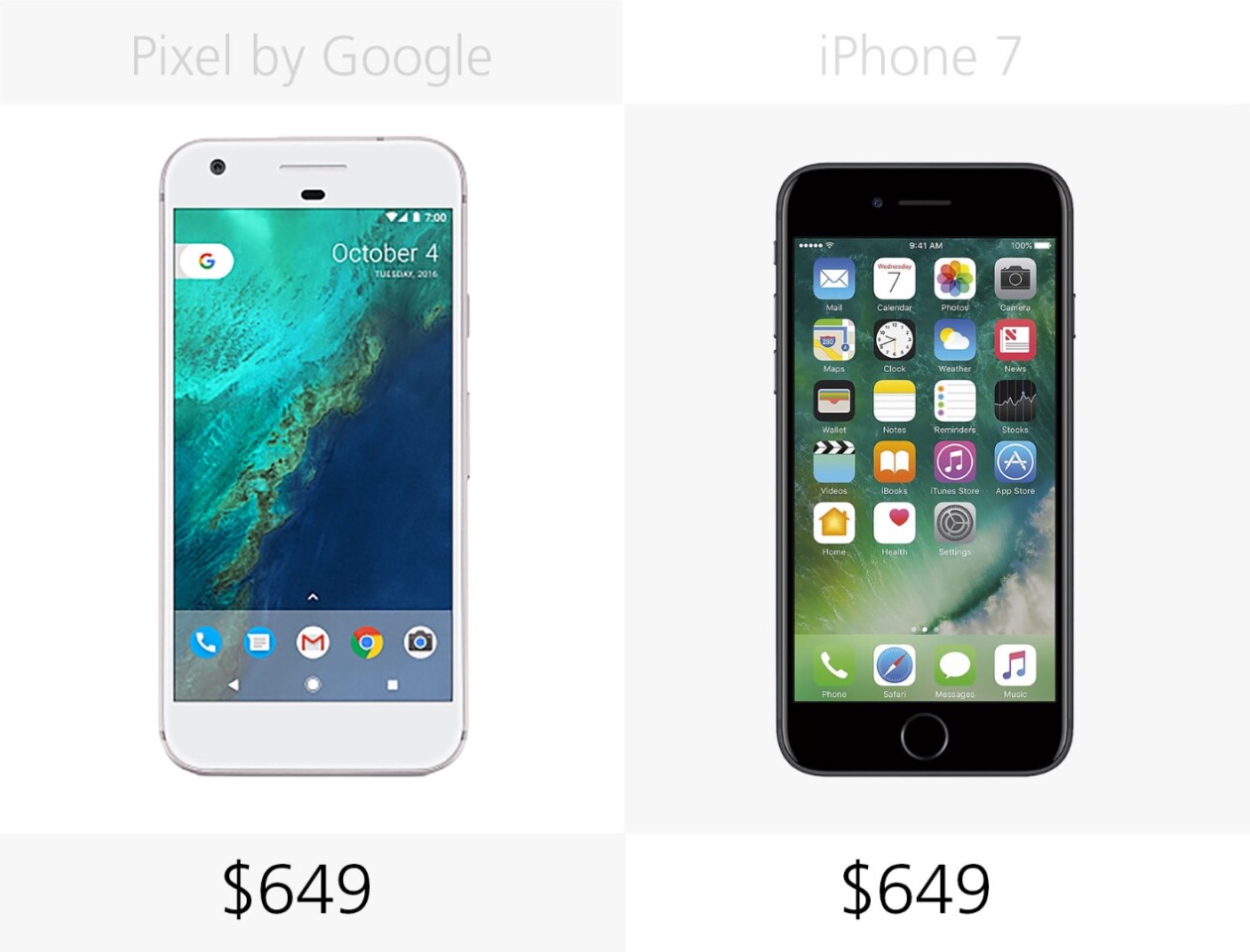
These two flagships are at the exact same price point, which makes them a little bit easier to weigh against each other.
When all is said and done, these are two very similarly-equipped phones that promise solid hardware and a cohesive software experience. We'll have better intel once we delve into our full-length review of the Pixel, which we'll post in the coming weeks. In the meantime, you can read up about the iPhone 7 and iOS 10. We bet that Pixel vs. iPhone decisions will come down to either a personal preference on operating system or a hang-up about a particular hardware feature, like VR, water resistance, or the headphone jack.


